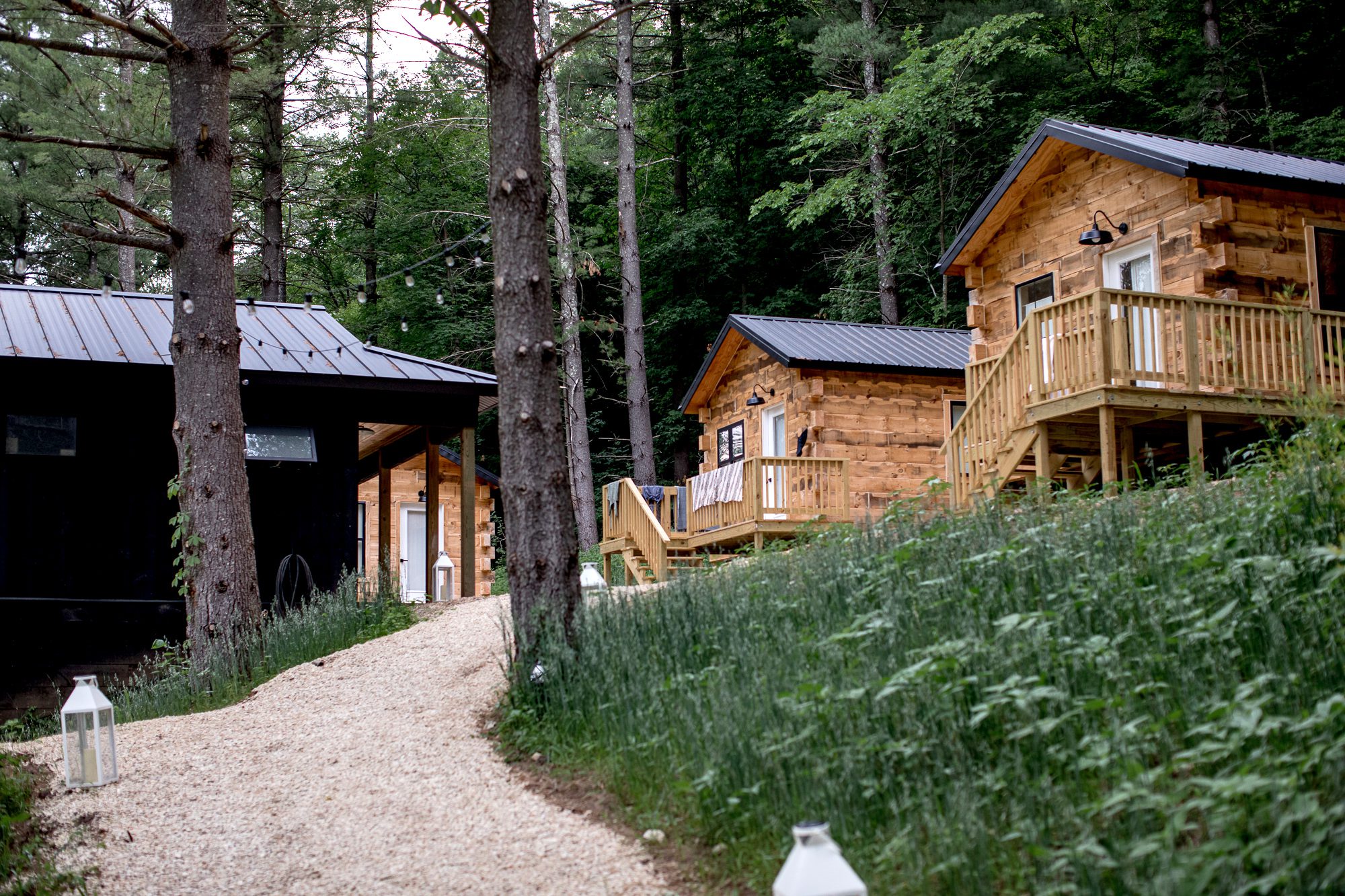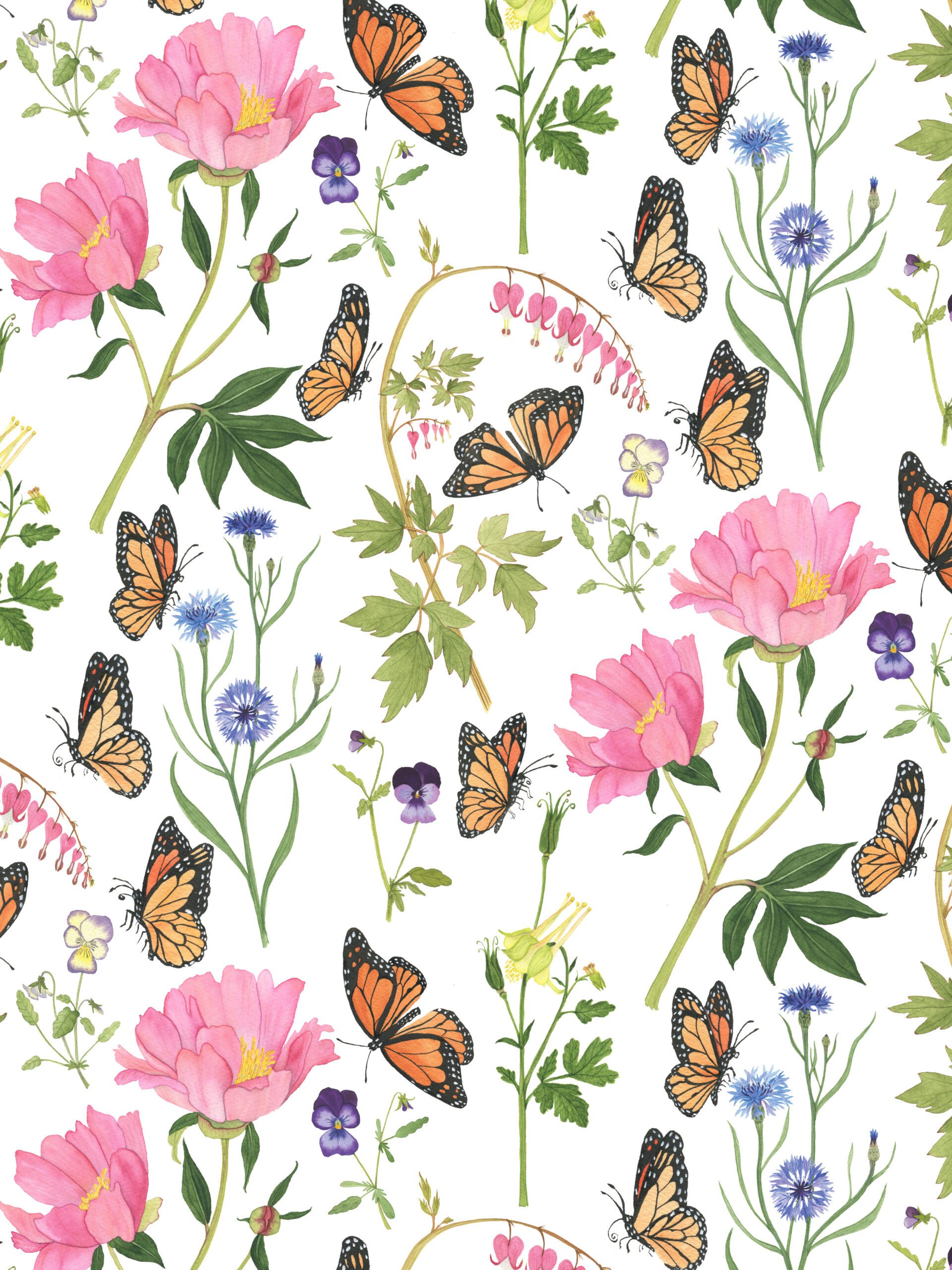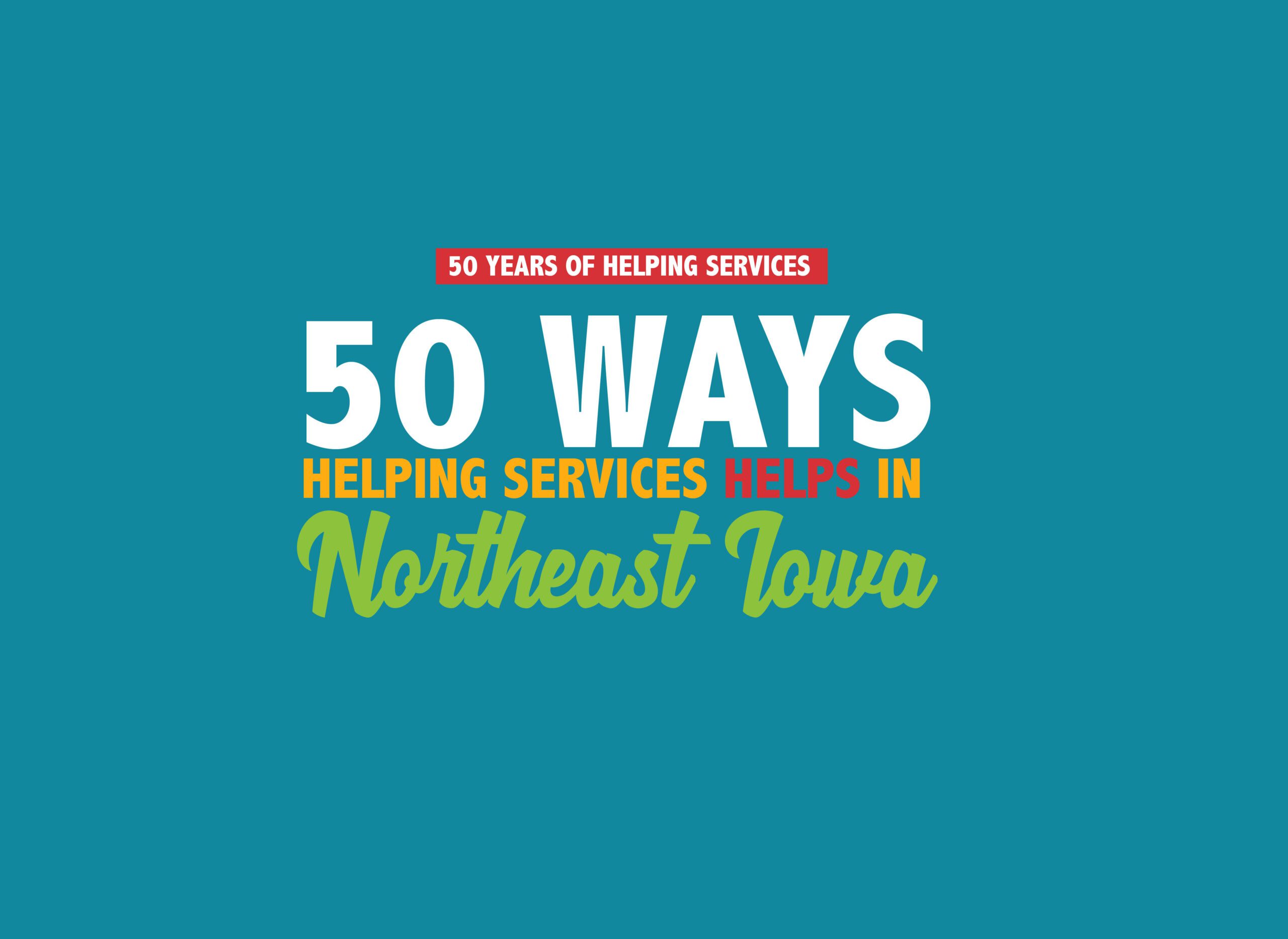Decorah Community Prairie – Flower Power
On Decorah’s west side, below rugged Pulpit Rock and the bluffs of Phelps Park, a horseshoe-shaped meadow arcs along the Upper Iowa River. Two giant bur oaks stretch toward the sky, providing shade on sunny afternoons. Deer amble along grass paths. Birds, butterflies, and bees buzz around clusters of wildflowers. This is the Decorah Community Prairie and Butterfly Garden.
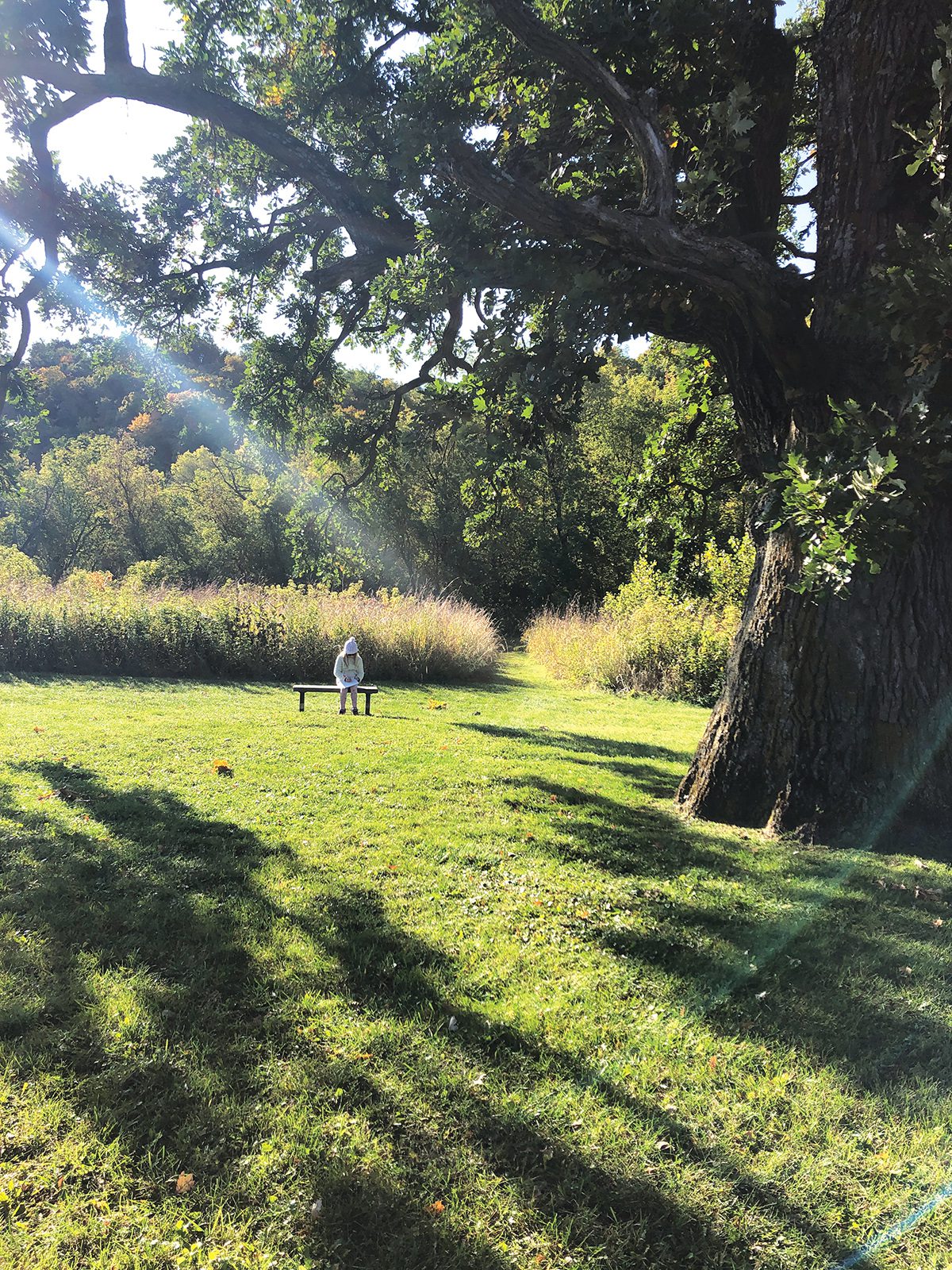
“Iowa used to be covered in prairie. If you had come here 200 years ago, you would find prairie plants growing along this same river,” Decorah Park-Rec Director Andy Nimrod says.
And if you had come here 20 years ago, even, things would have looked different than today. The 35-acre public park will celebrate its 20th birthday – or seed-day – in the coming year.
“What we have now is more of a cultivated prairie, but in a sense, we’ve circled back to the way things were,” Andy says.
The Decorah City Council first discussed converting this floodplain to parkland in the fall of 2001. Guided by Terry Haindfield, a wildlife biologist with the Iowa Department of Natural Resources, organizers drafted plans for an 11-acre grass filter strip bordered by 24 acres of native plants. The first seeds were scattered in spring 2002.
More than 100 community volunteers joined Andy and his Park-Rec colleagues to plant the prairie that spring. Newspaper coverage of those early efforts shows a mix of local businesspeople, Luther employees, Master Gardeners and area families – including Andy’s daughter, who was a toddler at the time. This fall, she’ll be a senior in college.
“We all met down there on a couple of different Saturday mornings and got the plants going. At first, we just threw the seeds out there to see what would grow, and then we went in with little potted plants called ‘plugs.’ We spent a lot of time planting plugs and mulching them after we had seeded everything down,” he says.
That initial seed mix included 73 species of diverse prairie flowers and grasses. For the designated butterfly garden area, planners chose plants that would nurture caterpillars and provide nectar sources for adult butterflies. Over the years, volunteers have added an educational element to the butterfly garden by installing signs that identify various plant species.
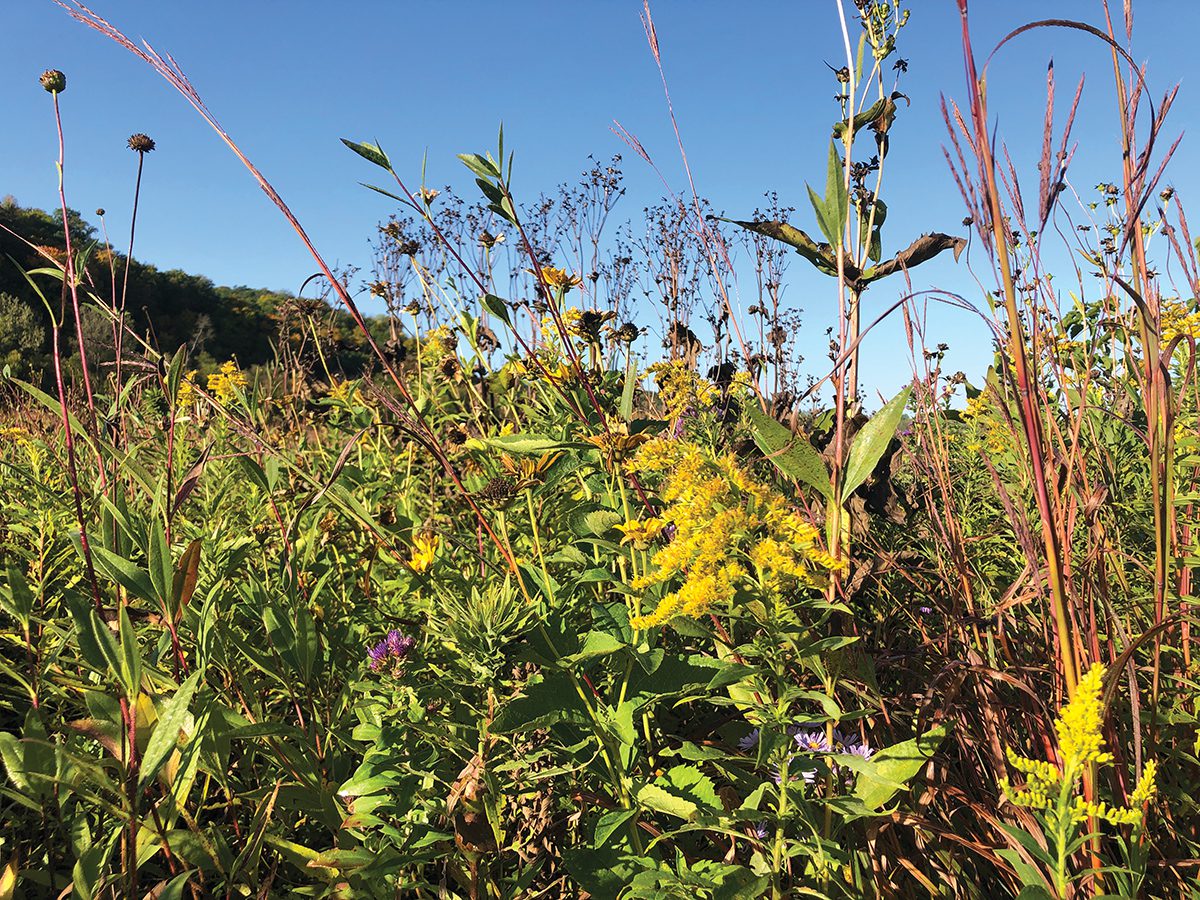
Turning the city-owned land from farm field to prairie was a way to prevent soil erosion, provide pollinator habitat and promote biodiversity. The prairie also presented a new place for hikers, runners, bikers, dogwalkers, skiers, snowshoers, and nature lovers to play. Teams from Decorah Parks and Recreation groom the prairie’s cross-country ski tracks in the winter, and they help maintain plants, trees, and trails throughout the year. Approximately two miles of mowed-grass paths weave through the park, while paved and mulched loops in the butterfly garden accommodate wheelchairs and strollers.
Those trails are a big draw, says Andy, and so is the park’s simplicity. Rather than play structures and sports fields, visitors enjoy seasonal flowers and scenic views of the surrounding river valley.
“A lot of people love going down there year-round. It’s an important part of their daily activities, whether that’s from an exercise standpoint or as stress-relief or just getting out to walk the dog,” he says.
Local plant enthusiasts build personal bonds in the park, too. Jerri Osenga started volunteering at the prairie’s butterfly garden, located near the park entrance, when she moved to Decorah in 2011. She and some friends she met at that spring’s volunteer kickoff meeting still tend to the butterfly garden on Tuesday mornings each summer, a decade later.
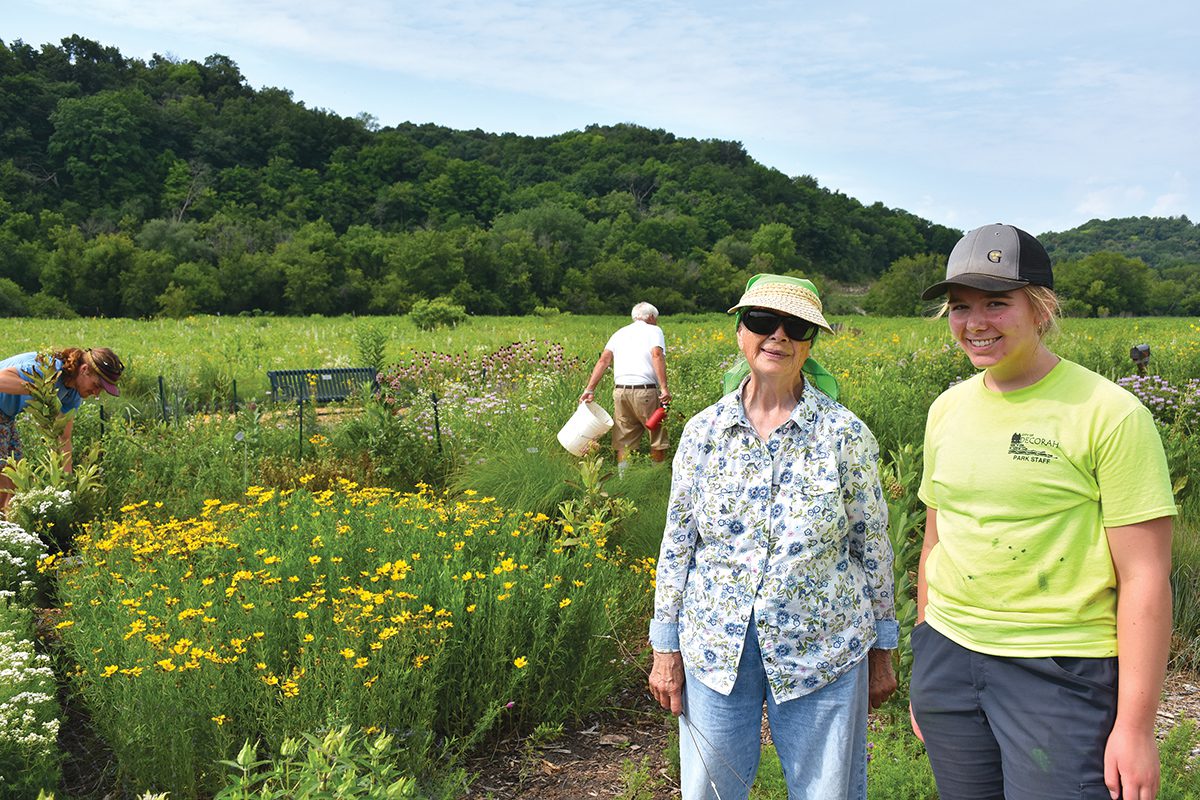
Annette Lechensky (right), and many others are an important part of the butterfly garden’s success. / Photo by Benji Nichols
“Working with these people is rewarding. Sharing my knowledge is rewarding. It’s a refuge. I tend to go over there no matter what, because the gardening is rather good for my soul,” Jerri says.
Ellen Cutting served on the Decorah City Council as initial prairie plans came together. She remembers strong support for the project from the start. Today, Ellen meets friends for summer walks in the park and sometimes skis groomed trails there when the snow flies.
“It’s by the river. It’s a quiet, isolated part of town. The prairie itself is beautiful, and there’s a nice sense of community there,” she says.
A free, self-guided tour map, available at the garden and on the Decorah Community Prairie website, spotlights more than 60 plants that thrive in the park. That list includes everything from prairie rose and pale purple coneflower to showy goldenrod, wild bergamot and foxglove beardtongue. Some perennials, like the towering compass plant, have roots that can reach more than 15 feet into the soil. Blue-eyed grass, on the other hand, might top out at six inches tall. At the height of summer, white wild indigo tends to dominate the landscape. In the fall, at least a dozen different species typically bloom in vibrant shades of yellow.
The Upper Iowa River sometimes washes logs and sand into the prairie, and heavy rains can rearrange the terrain. After floodwaters receded in 2008, for example, Jerri and her fellow volunteers spent several years supporting plants that reestablished themselves in the butterfly garden. Decorah Park-Rec crews regularly weed out cottonwoods, locusts and other invasive trees, as well.
Through their combined efforts, garden caretakers aim to keep the Decorah Community Prairie a welcoming place for native plants, pollinators, and people for many years to come.
“It’s difficult to decide whether you want it to be well-known or not, because it’s such a secluded, peaceful spot,” Jerri says. “An oasis in the city.”
Renee Brincks (www.reneebrincks.com) writes about travel, parks, and small producers. Her favorite plant in Decorah’s prairie is the smooth blue aster.
If You Go
To reach the Decorah Community Prairie and Butterfly Garden, take 5th Avenue to Ohio Street and head south toward the Upper Iowa River. Near the Aase Haugen property, follow the narrow drive that crosses over the dike. Parking is available in the lot near the butterfly garden.
For more information, and for a printable prairie and butterfly map, please visit sites.google.com/site/decorahprairiebfgarden.
Get Involved!
Volunteers gather at the Decorah Community Prairie and Butterfly Garden from 9 to 11 am, each Tuesday between May and October. Whether you’re new to wildflowers or have years of gardening experience, you can help weed, water, mulch, and maintain the native plants that pollinators depend on. Volunteers can also take part in the prairie’s Adopt-A-Plant program, caring for a particular species throughout the growing season.
To learn more, contact the Decorah Parks and Recreation office at 563-382-4158 or parkrec@decorahia.org.







